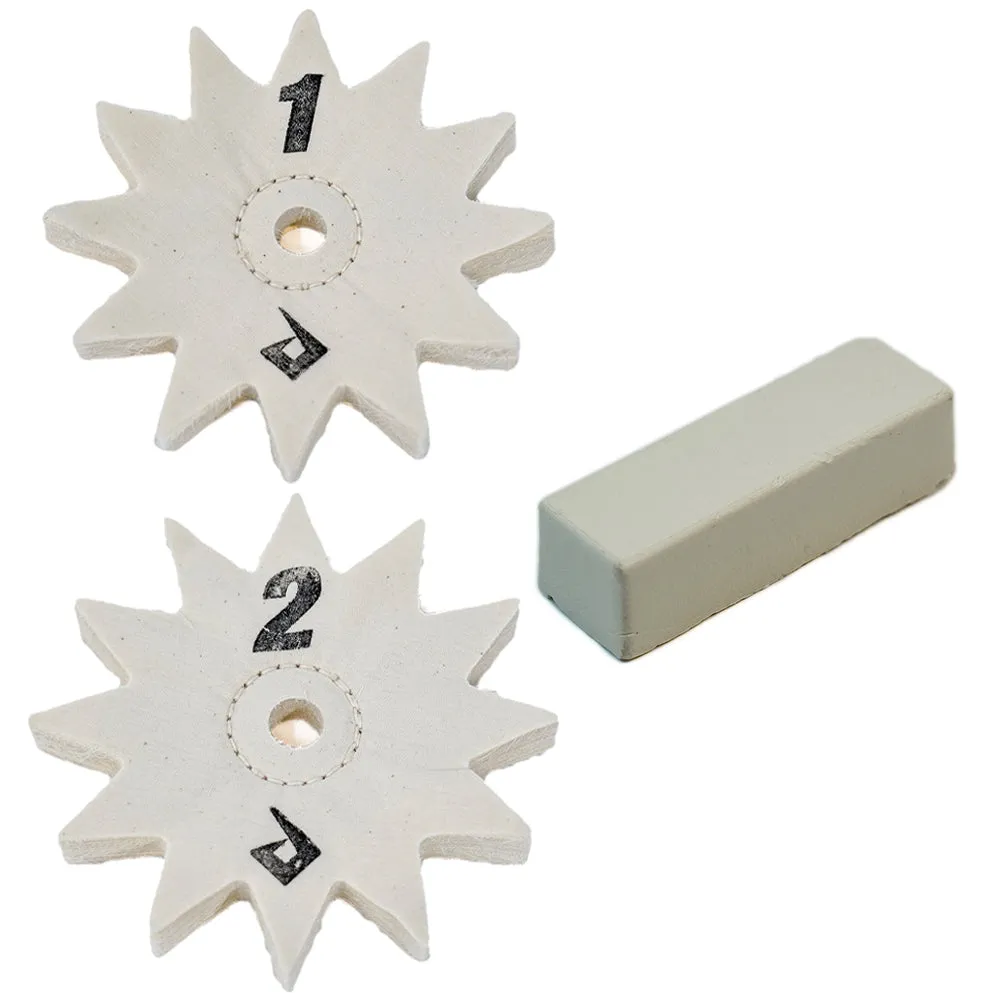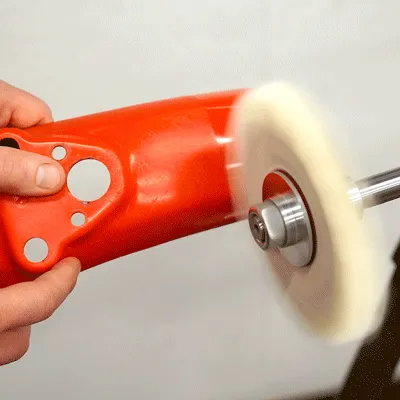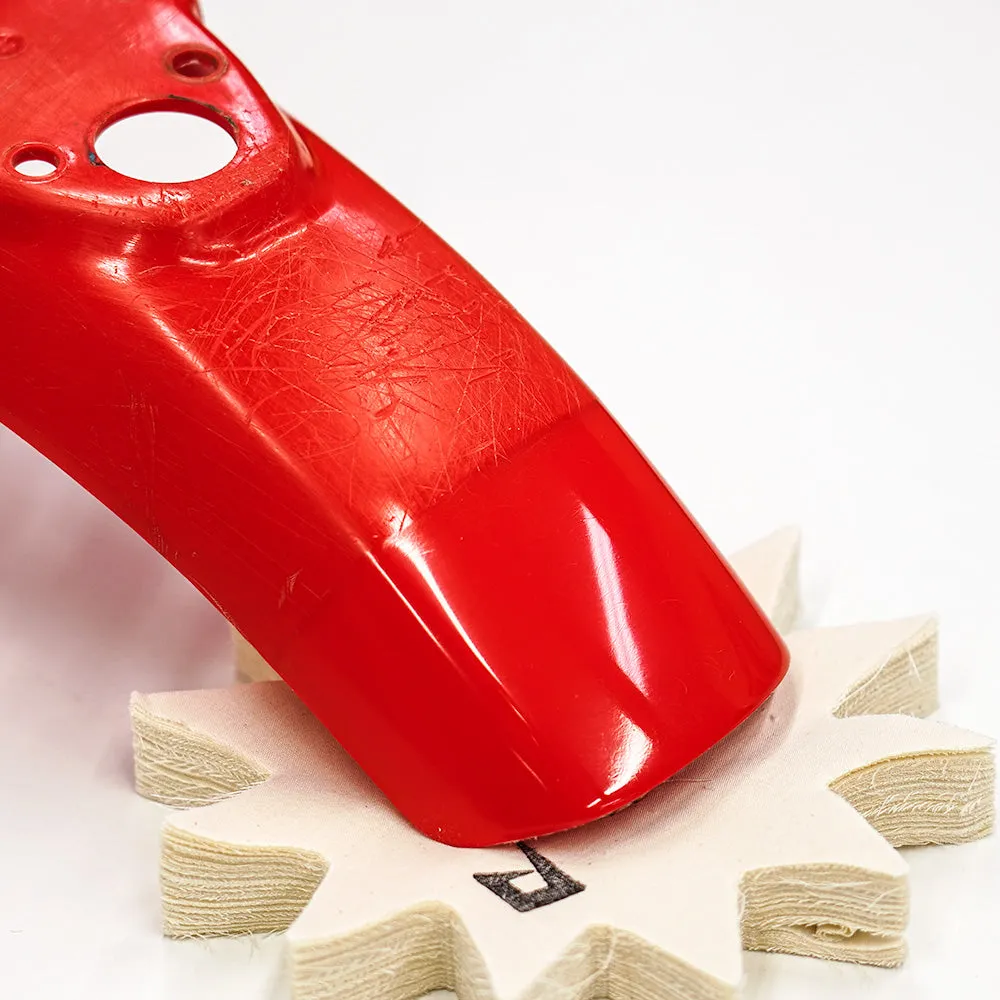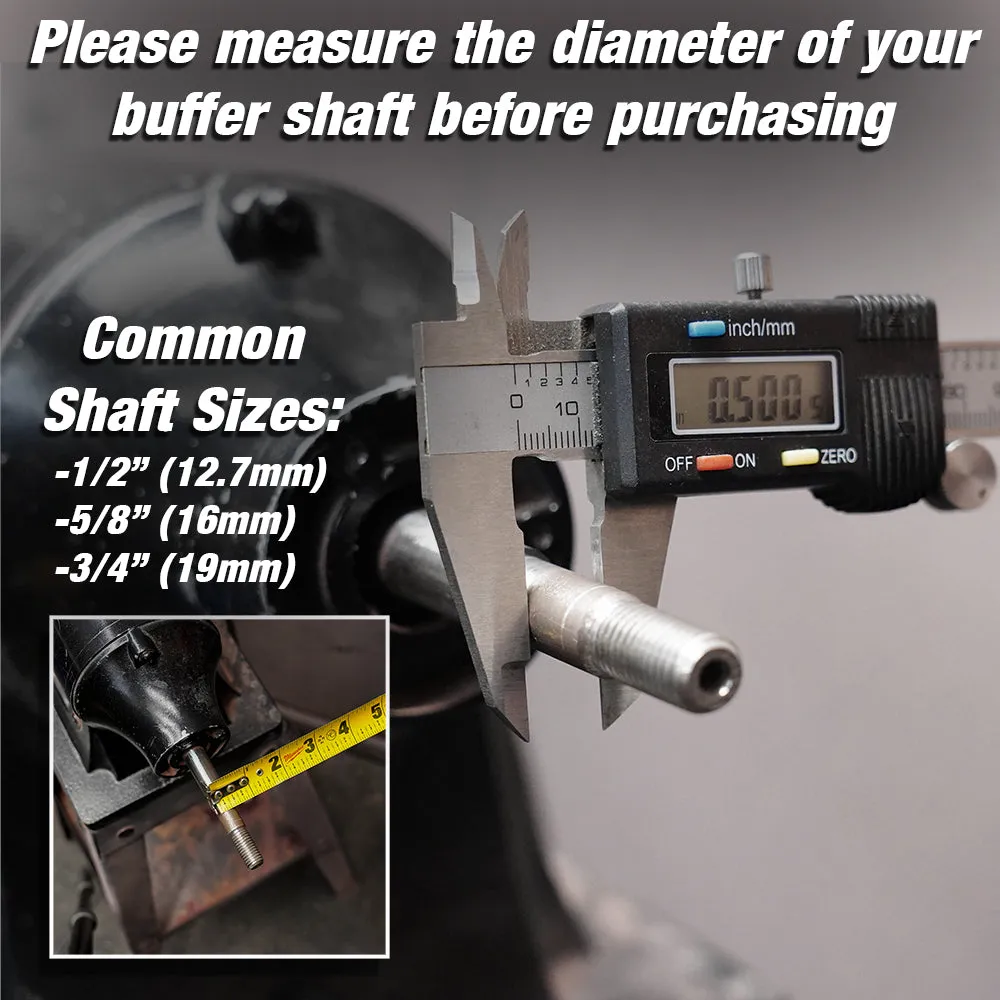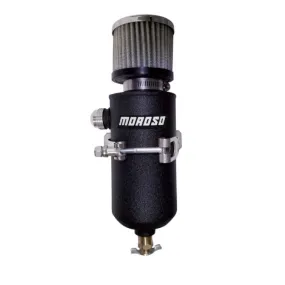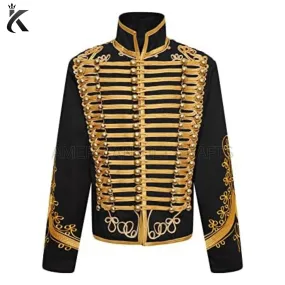Info
What Does It Do?
Produces a beautiful shine on plastic.
How Does It Work?
These wheels lightly melt the very top layer of plastic to produce a brilliant shine. They mount on a bench grinder.
Use the #1 wheel with the provided compound as the first stage of polishing. This will remove fine scratches and prepare the part for final polishing. Then use the #2 wheel with no compound for a full shine.
In order to achieve a full shine out of plastic, the part must be free of scratches. You can smooth out scratches by using by hand or on a sanding machine. These wheels are also .
Includes
- #1 Polishing Wheel
- #2 Polishing Wheel
- 1 Polishing Compound (3.5 oz bar)
- Full Instructions
Click on "Video" tab to see the set in use.
-Bench grinder not included.
-Always wear a dust mask or respirator and proper eye protection while polishing!
Related Items
Specs
Specs
- Proprietary polishing wheel design beautifully polishes plastic without causing damage
- Polishing wheels are 6" diameter and 1/2" wide
- Max RPM of wheels: 3600
- Polishing wheels are available for 1/2" (12.7mm), 5/8" (16mm), and 3/4" (19mm) buffer shaft sizes (select upon checkout)
- Compound is a unique blend formulated for plastics. It's made with a fine abrasive that gently smooths scratches without damage the plastic. Compound is solid in form but melts onto the polishing wheel as it's spinning.
How To
How To
Please refer to the buffing chart at the bottom of this tab for the steps necessary to restore plastic.
Keep in mind, if you are looking to achieve the best possible finish, you will need to do all stages of sanding and polishing. You cannot go right to the final step and expect a great finish. Plastics (especially white) that are yellowed from fuel cannot be fixed with this method. Crease marks from bending also cannot be sanded or polished out.
Step 1
-It is a good idea to test the polishing steps on a scrap piece beforehand, so you know how much pressure can be safely applied.
-Secure the polishing wheel marked “1” to buffer with a flange on either side. The first step uses a polishing compound to help smooth scratches from sanding.
-Apply compound to the spinning wheel for 2-3 seconds to allow it to melt on the wheel. It’s normal for fibers to fly off the during the first 30 seconds of use.
-Start with light pressure and move to very light pressure towards the end of each step.
-The polishing wheels must be used with caution, since heavy pressure will result in burns.
-Polish in different directions and patterns to achieve the most uniform finish.
-Keep the wheel moving across the part, do not stay in one area for more than a few seconds.
-The sweet spot to buff on the wheel is between 4 and 5 o’clock. Look at your buffing machine from the left side, and picture where 4 and 5 o’clock is on the wheel, it will be near the bottom. That is where you will want the part to touch the wheel when buffing.
-In order to prevent burning the plastic or flinging the part out of your hands, be careful around edges. The wheel should be spinning away from an edge and not towards it.
-Re apply compound when the polishing effect lessens. Every 2 to 3 minutes is a good interval.
-As you're polishing, any areas you missed while sanding will start to appear. Some areas may polish out during this step, while the larger imperfections will require additional sanding.
-Once you see a smooth scratch free finish, you are ready for the second step of polishing.
-After the first step of polishing, you MUST clean the part with isopropyl alcohol or contact cleaner to remove the polishing compound.
-Do not mix the wheels up, the wheel stamped with 1 is used for the first step, 2 is used for the final step.
Step 2
-Secure the polishing wheel marked “2” to buffer with a flange on either side. Do not use any polishing compound on this wheel. Use the same techniques described in step 1, without the compound.
-If you have a hazy finish, keep polishing with very light pressure and move slowly across the part until you achieve a clear glossy finish. Do not apply heavy pressure.
-If you notice any areas that have scuffs, you can go back to step 1 of polishing to correct these.
-Always wear a dust mask or respirator and eye protection while buffing!
-If you have problems while polishing, refer to the troubleshooting guide at the bottom of this tab.
After Polishing
It is not recommended to use a clear coat over plastic, since the durability is not great and it poses a larger problem once it needs to be stripped off. A good temporary protectant is the .
Buffer Recommendations
FAQ
Frequently Asked Questions
Will the polishing wheels burn my plastic?
The polishing wheels must be used with caution, since heavy pressure will result in burns. The wheels are intended to be used with very light pressure, they produce the best result when doing so. It is a good idea to test the wheels for the first time with a spare piece of plastic to get the technique and pressure dialed in.
Does this kit fix my yellowed gas tank?
Unfortunately, sanding and polishing will not remove the yellowing you commonly see on white gas tanks. This yellowing is through the entire plastic layer and cannot be sanded out. Sanding and polishing will still produce a nice looking part, although it won't be perfectly white.
My plastic has a white crease mark, can that be fixed?
This kit will not fix white crease marks on plastics.
Will this kit work on black plastics?
Yes, it will restore black plastic. Keep in mind that black plastic shows scuffs and scratches more easily than other plastics, so the sanding and polishing on black plastics is more tedious and time consuming.
How can I protect the finish after polishing?
A good ceramic spray protectant is . It is not recommended to use a clear coat paint over plastic, since the durability is not great and it poses a larger problem once it needs to be stripped off.
What bench grinder / buffer is best for polishing?
Video
Tags: Plastic Polish, Polishing, Buff, Buffing, Sanding, Refinish Plastic, Finish Plastic, Restore Plastic, Fix Plastic




